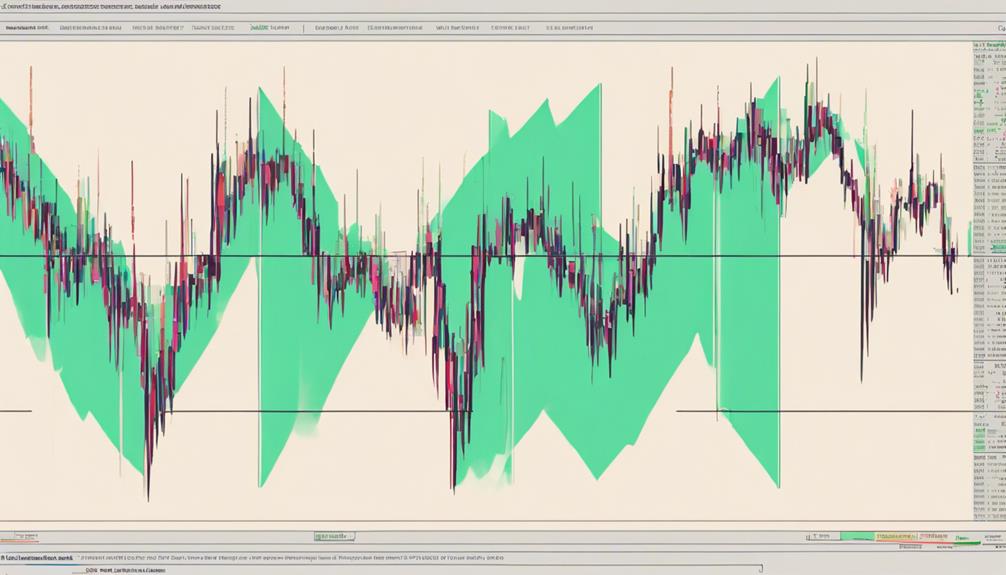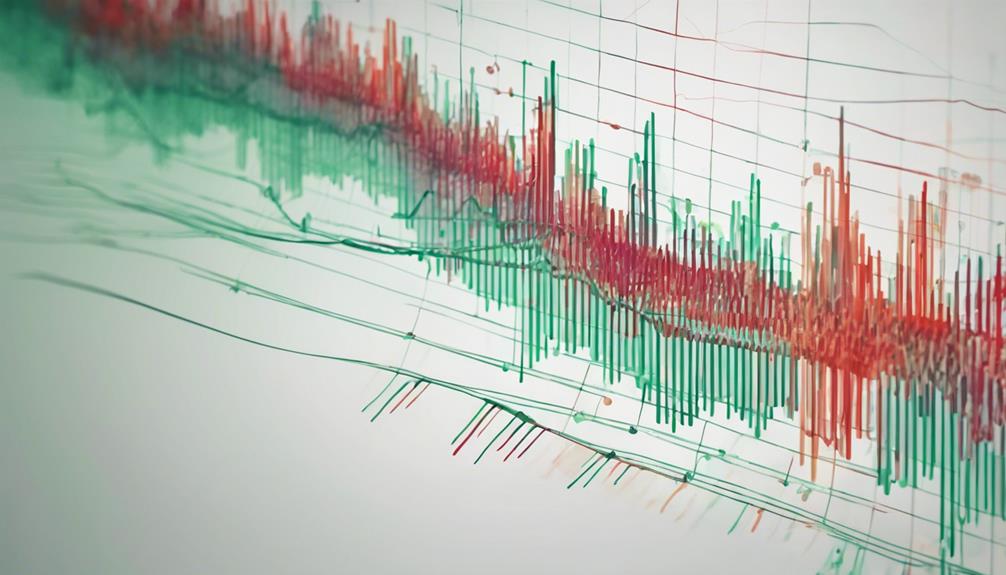Exploring the nuanced world of Trix Indicator fluctuations unveils a complex yet intriguing realm within technical analysis. As traders navigate the ebbs and flows of this momentum indicator, questions arise about its reliability amidst market consolidations and overlapping moving averages.
The interplay of signals like Zero Line Cross and Divergences adds layers of depth to Trix interpretation, challenging traders to decode these cues for informed decision-making. Amidst the sea of indicators available, Trix's unique characteristics beckon traders to explore its potential for unlocking hidden market patterns and enhancing trading strategies.
Understanding the Trix Indicator
The Trix Indicator, a pivotal tool in technical analysis for traders seeking to gauge market momentum, is a specialized oscillator that delineates the percentage change within a triple exponential moving average. This indicator shows the momentum of a particular security by measuring the rate of change of that security's triple exponential moving average.
Traders often look for key points when using the Trix Indicator. One such point is when the indicator crosses above or below the zero line, indicating potential buy or sell signals. These crosses can provide insights into potential shifts in market sentiment and help traders make informed decisions.
Additionally, the Trix Indicator's signal line, which is a moving average of the indicator itself, can also be used to confirm trends and generate trading signals based on the price action. By understanding how the Trix Indicator reacts to price movements and identifying key levels such as zero line crosses, traders can better navigate the complexities of the financial markets.
Key Notes on Trix Indicator

Building on insights from understanding the Trix Indicator, key notes highlight its significance in technical analysis for traders seeking to navigate market momentum efficiently. The Triple Exponential Average Trix (TRIX) is a powerful tool that utilizes triple smoothing of a moving average to measure market momentum. Here are essential points to consider:
- Identifying Overbought and Oversold Conditions: TRIX serves as a momentum indicator, showing overbought and oversold levels. Traders often look for extreme TRIX values to anticipate potential reversals in the market.
- Utilizing TRIX Crosses: Traders pay close attention to TRIX crosses, especially when the indicator crosses the zero line. These crosses can signal potential buy or sell opportunities, indicating shifts in market sentiment.
- Confirmation with Signal Line Crosses: TRIX uses triple exponential smoothing to confirm the strength of trends. Signal line crosses in TRIX provide additional insights into the potential direction of price movements, helping traders make informed decisions.
Benefits of Trix Indicator Fluctuations

Enhancing market analysis, Trix indicator fluctuations offer traders valuable insights into potential market conditions and trends.
The Trix Indicator, short for Triple Exponential Moving Average, is a momentum oscillator that is smoothed three times, providing a clear view of price movement.
By monitoring Trix indicator changes, traders can gain information about overbought or oversold conditions within the financial markets. These fluctuations also act as a signal for potential shifts in bullish or bearish momentum.
Additionally, Trix indicator variations assist in confirming the strength of existing trends in price movements. Understanding these fluctuations is crucial as they can help traders spot significant turning points or market reversals before they occur.
Analyzing the Trix indicator provides essential information for making informed trading decisions, ensuring that traders are well-equipped to navigate the dynamic landscape of the financial markets with confidence and precision.
Trading Signals With Trix Indicator

Understanding the intricacies of the Trix Indicator allows traders to effectively interpret and capitalize on the various trading signals it provides. These signals play a crucial role in decision-making processes, helping traders navigate the complex landscape of the financial markets.
Here are three key trading signals that traders can leverage when using the Trix Indicator:
- Zero Line Cross: The Zero Line Cross indicates shifts in bullish or bearish momentum in the market. A cross above the zero line suggests a bullish trend, while a cross below indicates a bearish trend.
- Signal Line Cross: Signal Line Crosses help traders identify entry points and confirm support and resistance levels. When the Trix line crosses above the Signal Line, it may signify a bullish signal, whereas a cross below could indicate a bearish signal.
- Divergences: Divergences in the Trix Indicator signal potential market reversals and turning points. Traders often look for divergences between price action and the Trix Indicator to anticipate changes in momentum and market direction. Recognizing these divergences is essential for making informed trading decisions.
Calculating TRIX: Triple Exponential Moving Average

Utilizing a triple exponential moving average, the TRIX indicator effectively smooths out price data to highlight underlying trends and reduce noise. The triple smoothing characteristic of TRIX distinguishes it from other indicators, enabling a more refined analysis of market trends and momentum.
The calculation of TRIX involves a three-step process of applying exponential smoothing to moving averages, incorporating percentage changes within these averages. This meticulous calculation method ensures that TRIX accurately reflects the momentum and trend changes in the underlying asset.
By interpreting the TRIX values derived from these calculations, traders can make informed decisions regarding entry and exit points in the market. Understanding the nuances of TRIX calculation is essential for traders seeking a comprehensive view of market dynamics, as it provides insights into both short-term fluctuations and long-term trends.
Mastery of TRIX calculation empowers traders to navigate the market with a deeper understanding of price movements and potential reversals.
Can the Trix Indicator Fluctuations Impact Momentum Trading Strategies?
The use of the Trix indicator in momentum trading strategies can provide valuable insights into market fluctuations. By analyzing the Trix indicator, traders can make more informed decisions about when to enter or exit trades, ultimately improving their overall trading performance and profitability.
Frequently Asked Questions
What Is the TRIX Indicator Strategy?
The TRIX indicator strategy involves analyzing triple exponential moving averages to detect momentum signals. It helps traders identify overbought and oversold market conditions by focusing on zero line crosses, signal line crosses, and divergences for trading signals.
Is Trix a Good Indicator?
The Trix indicator can be a valuable tool for traders, offering insights into trend strength and potential buy or sell signals. While not flawless in all scenarios, when used alongside other indicators, it can enhance decision-making in trading strategies.
Is Trix a Lagging Indicator?
While the Trix indicator is often viewed as a leading indicator due to its ability to anticipate price movements by calculating changes in moving averages, it is not considered a lagging indicator in the traditional sense.
How Is Trix Calculated?
TRIX is calculated by measuring the percentage change in a triple exponential moving average over a specified period. This involves applying three exponential moving averages to price data. Understanding this calculation is vital for accurate interpretation of TRIX fluctuations.
Conclusion
In conclusion, mastering the fluctuations of the Trix Indicator can provide valuable insights into market momentum and potential buy or sell signals.
By understanding the key concepts and benefits of this indicator, traders can make more informed decisions and enhance their trading strategies.
Remember, when navigating the complexities of the market, having a solid grasp on technical indicators like Trix can make all the difference in achieving success.
After all, knowledge is power in the world of trading.
